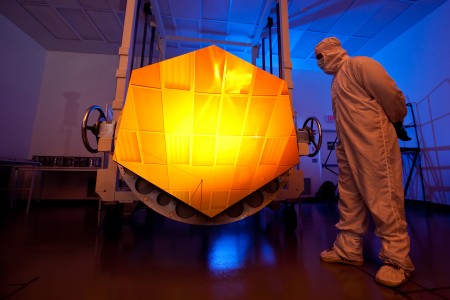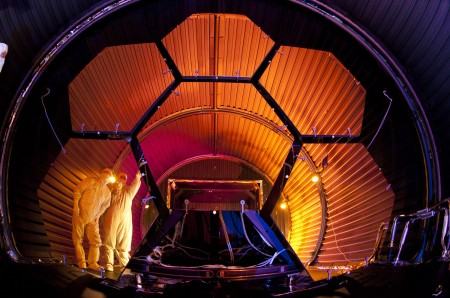James Webb Space Telescope
Science!
Over twenty years in the making and set for a 2018 launch, the James Webb Space Telescope (JWST) is the single most advanced space telescope ever constructed. Successor to NASA’s beloved Hubble Space Telescope, JWST has been purpose-built for studying the infrared portion of the electromagnetic spectrum to give astronomers an ability of seeing past clouds of dust and gas and further back to the beginning of the Universe than we ever have. How far? According to NASA the JWST will see the Universe’s very first star formations taking place only 100 to 250 million years after the Big Bang. Such distant and precise observations promise to unleash a torrent of new discoveries and unlock fundamental quandaries about the origin of the cosmos and life in the Universe.
A few interesting facts:
• JWST’s primary mirror is a 6.5 meter diameter gold coated beryllium reflector that is too large for contemporary launch vehicles, so the mirror is being composed of 18 hexagonal segments (as seen above), which will all unfold after the telescope is launched. Why Hexagons? It’s beyond my comprehension, but supposedly this has something to do with hexagons having a perimeter less than that of a square over a given area, which translates to a gained efficiency for steering the mirror segments and focusing the telescope.
• The telescope will maintain an L2 orbit, meaning that it will orbit in earth’s shadow and around the sun, not the earth. The idea here is to eliminate all possible heat / light sources, such as Earth’s heat-shimmer, and keep the telescope as cold as possible. How cold? Extremely. Cold. The JWST’s mid-infrared instrument (MIRI) will operate at a set temperature of 7 Kelvins, or -266° C / -447° F, through the use of a helium refrigerator, or cryocooler system (source).
• Although JWST’s primary goal is to study the first galaxies or stars that formed after the Big Bang, the telescope is also capable of measuring the physical and chemical properties of planetary systems within our Milky Way and will investigate the potential for life in those planetary systems.
• When launched, some scientists suggest the telescope will represent a greater technological achievement than landing on the moon.
Posted by: Owen Perry







